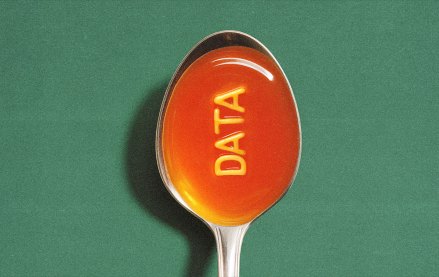Save 50% on a 3-month Digiday+ membership. Ends Dec 12.
The loss of tracking cookies is fueling the importance of email newsletters
Publishers have moved to the acceptance phase of the grieving process over the loss of third-party cookies. The question now is how to move on, and increasingly that means collecting first-party data through registration data. Enter the email newsletter.
“That’s what’s fueling rapid rise newsletter products, it’s to create that value exchange between the consumer and the company, and that value is the email address,” said a publishing executive at Digiday’s Publishing Summit Europe, this week. “Publishers will get more sophisticated, newsletters now are fairly blunt instruments.”
Publishers and the rest of the digital ecosystem are caught in limbo as they wait for Google to decide how to replace third-party cookies and whether they can effectively identify audiences in the open marketplace. This forces some to think more strategically about how they can “own [their] owned audience” and drive more email registrations.
News publishers are well-positioned to spin up topical newsletters in a matter of weeks at a low cost. The Economist is one of a clutch of news publishers (like The New York Times and Quartz) that is launching a coronavirus newsletter in the next few weeks. For subscription-led business models, newsletters are proven to aid subscriber retention. That’s something The Economist, with 1.6 million print and digital subscribers, is working hard to improve, said Remy Becher, vice president, product. Since December, the publisher has launched two topic-specific newsletters on the climate crisis and U.S. elections respectively. These join its three other general weekly and daily newsletters. Topical newsletters have a 20% higher open rate and twice the number of click-through rates, compared with other newsletters. In general, newsletters have overtaken Twitter in terms of a source of traffic, Becher said.
Newsletters offer multiple revenue streams. For the Financial Times, which has eight subscriber-only newsletters and dozens of others, as well as accruing first-party registration data it monetizes them through native ad slots which link to sponsored content on the FT.com. According to Jessica Barret, director of programmatic and commercial automation, newsletters are seen as a separate revenue stream for the publisher.
“We’re seeing a lot more readers tuned into newsletters, they are a big focus for us this year,” she said on stage at Digiday’s Publishing Summit Europe. “We talk about contextual targeting and moving away from the audience targeting…As well as sponsored content you can incorporate interesting native elements in a relevant, contextual environment. Newsletters are a perfect example of that.”
The open rates are high because readers opt into the newsletters rather than the FT signing them up automatically, she added.
Although, an abundance of newsletters is not a viable solution for all publishers, nor is it clear where the ceiling is for readers. And for all the talk of publishers striking more private marketplace deals and flexing contextual targeting options, these won’t recoup the revenue lost from yields dropping when Google Chrome nixes third-party cookies. While larger publishers will weather the storm, the distance between the haves and the have nots will grow.
“There will be a lot of blood on the floor from publishers,” said a publishing executive. “Specifically of low-value, entertainment content — people that don’t have purpose — and especially arbitrage publishers.”
More in Media

Meta enters AI licensing fray, striking deals with People Inc., USA Today Co. and more
The platform has secured seven multi-year deals with publishers including CNN, Fox News, People Inc., USA Today Co to incorporate their content into its large language model (LLM) Llama.

European publishers say the Digital Omnibus ‘cookie fix’ leaves them worse off
The European Union’s attempt at a legislative spring clean for Europe’s web of data privacy rules, has landed flat with publishers.

Digiday+ Research Subscription Index 2025: Subscription strategies from Bloomberg, The New York Times, Vox and others
Digiday’s third annual Subscription Index examines and measures publishers’ subscription strategies to identify common approaches and key tactics among Bloomberg, The New York Times, Vox and others.








